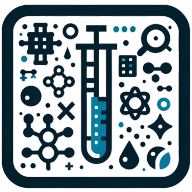Navigating the complex world of drug testing laws and regulations can be a daunting task. This blog post aims to demystify these laws, providing a comprehensive guide on the subject. We'll delve into the various aspects of these regulations, their implications, and how they affect both employers and employees.
The Basics of Drug Testing Laws
Drug testing laws vary significantly from one jurisdiction to another. In the United States, for instance, these laws are primarily governed by both federal and state legislation. Federal laws set the baseline standards, while state laws may provide additional protections or requirements.
The Drug-Free Workplace Act of 1988 is a key federal law in this area. It mandates that all federal contractors and grantees maintain a drug-free workplace. However, it doesn't explicitly require drug testing. Instead, it leaves the decision to the discretion of the employer.
On the state level, laws can be more specific and restrictive. Some states, like California, have stringent privacy laws that limit the circumstances under which an employer can conduct drug tests. Others, like Florida, have laws that encourage drug-free workplaces and provide incentives for businesses that implement drug testing programs.
Types of Drug Tests and Their Regulations
There are several types of drug tests that employers can use, each with its own set of regulations. The most common types include urine tests, blood tests, hair tests, and saliva tests.
Urine tests are the most commonly used due to their cost-effectiveness and ease of administration. They can detect a wide range of drugs, including marijuana, cocaine, amphetamines, and opioids. Regulations for urine tests often focus on ensuring the privacy of the individual being tested and the integrity of the sample.
Blood tests are less common due to their invasive nature and higher cost. However, they can provide a more accurate picture of current impairment, especially for substances like alcohol. Regulations for blood tests are typically more stringent, given the invasive nature of the procedure.
Hair tests and saliva tests are less common and have their own set of regulations. Hair tests can detect drug use over a longer period, while saliva tests are useful for detecting recent drug use.
Employer Responsibilities and Rights
Employers have a legal responsibility to provide a safe and healthy workplace. This often includes implementing policies and procedures to prevent drug use and impairment in the workplace. However, employers also have to balance this responsibility with the rights of their employees.
Employers have the right to conduct drug tests in certain circumstances. These can include pre-employment testing, random testing, and testing based on reasonable suspicion or after an accident. However, these rights are not absolute and are subject to various restrictions and requirements.
For instance, pre-employment testing is generally allowed, but employers must ensure that they apply this policy consistently to all applicants. Random testing is more controversial and is subject to more restrictions. In many states, random testing is only allowed for safety-sensitive positions or under specific circumstances.
Employee Rights and Protections
Employees have certain rights and protections when it comes to drug testing. These rights vary depending on the jurisdiction and the specific circumstances, but there are some common themes.
Firstly, employees have a right to privacy. This means that employers must conduct drug tests in a manner that respects the employee's privacy. For instance, employers typically cannot observe the employee providing the sample, unless there is a reason to believe the employee might tamper with it.
Secondly, employees have a right to non-discrimination. This means that employers cannot use drug tests to discriminate against certain groups or individuals. For instance, an employer cannot selectively test certain employees based on their race, gender, or other protected characteristics.
Finally, employees have a right to due process. This means that if an employer takes disciplinary action based on a positive drug test, the employee has a right to challenge the results and the procedure used.
The Impact of Legalized Marijuana on Drug Testing Laws
The legalization of marijuana in many states has added a new layer of complexity to drug testing laws. While marijuana is still illegal under federal law, many states have laws that protect employees who use marijuana for medical or recreational purposes.
This has created a legal gray area for employers. On one hand, they have a responsibility to maintain a drug-free workplace. On the other hand, they must respect the rights of employees who legally use marijuana outside of work.
In some states, employers cannot fire or refuse to hire someone solely because they test positive for marijuana. However, employers can still take action if the employee is impaired at work or if the marijuana use poses a safety risk.
Future Trends in Drug Testing Laws
As society's attitudes towards drugs continue to evolve, so too will drug testing laws. One trend to watch is the increasing recognition of substance use disorders as a medical condition. This could lead to more protections for employees who are seeking treatment or recovery.
Another trend is the increasing use of alternative testing methods, like oral fluid testing or hair testing. These methods can provide a more accurate picture of recent drug use, but they also raise new legal and ethical questions.
Finally, the ongoing debate over marijuana legalization will continue to impact drug testing laws. As more states legalize marijuana, employers will need to navigate the conflicting state and federal laws.
Wrapping Up: Navigating Drug Testing Laws and Regulations
Understanding drug testing laws and regulations is crucial for both employers and employees. While these laws can be complex and vary greatly from one jurisdiction to another, staying informed can help ensure a safe, healthy, and fair workplace. As these laws continue to evolve, staying up-to-date will be more important than ever.

